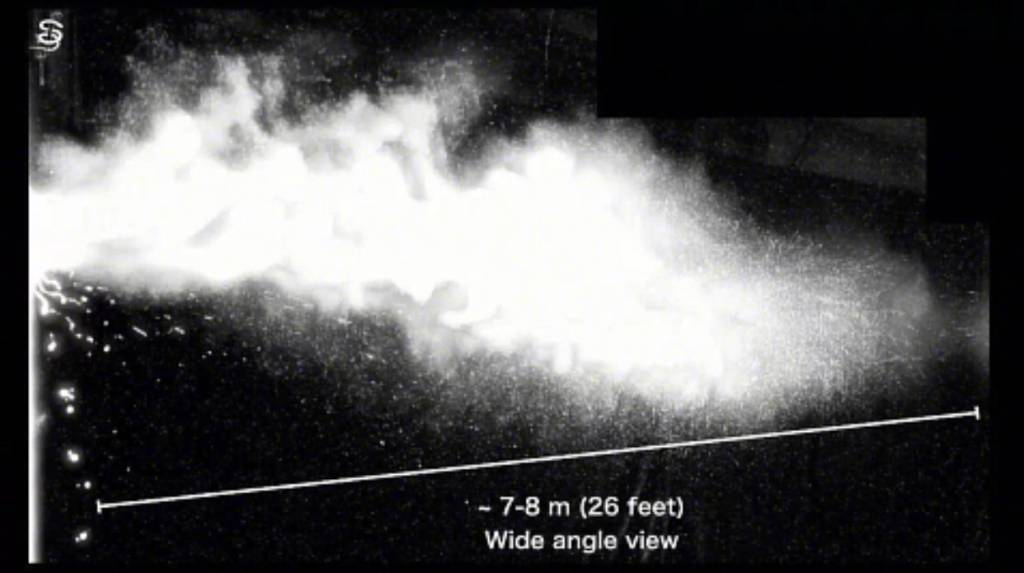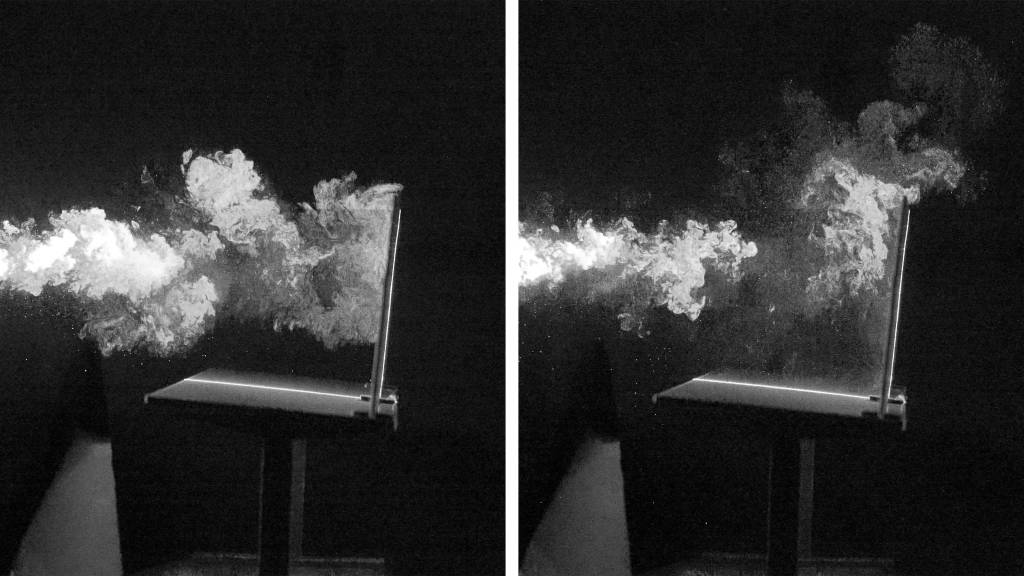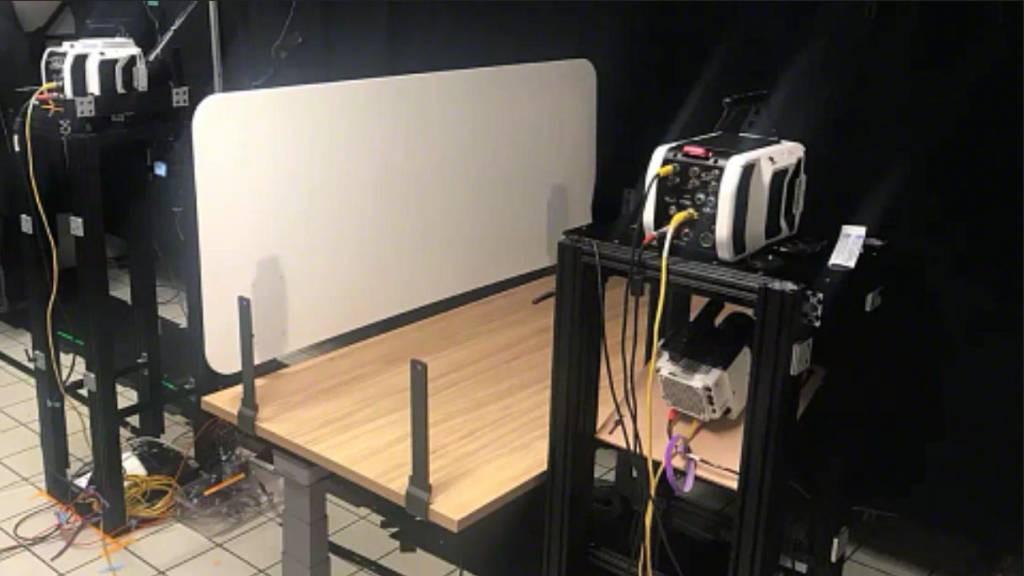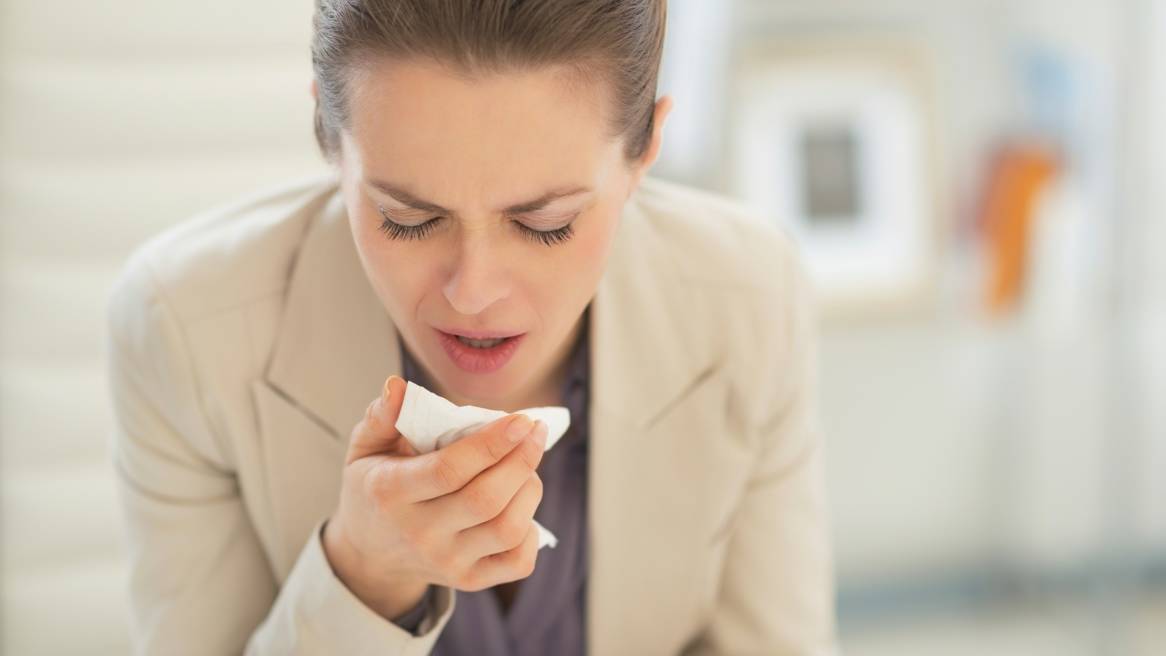The Science of Aerosols
MIT/Steelcase partnership reveals more on how aerosols behave in indoor environment
When Steelcase formed a partnership in June 2020 with Prof. Lydia Bourouiba, director of The Fluid Dynamics of Disease Transmission Laboratory at MIT, we had no idea that aerosols would turn out to be the main way that COVID-19 is transmitted.
A year later, airflow is under scrutiny like never before. Schools, companies and other organizations are reviewing their HVAC systems and buying air purifiers to combat the flow of pathogens. Much remains to be learned about how microbes move through the air, but Prof. Bourouiba’s preliminary learnings are helping to move this field of study forward – and could help companies better prepare for the implications of other respiratory diseases like influenza, which costs U.S. businesses 17 million work days every year.
Prof. Bourouiba’s learnings could help companies better prepare for respiratory diseases like influenza, which costs U.S. businesses 17 million work days every year.
Among her early findings:
- Exhalation droplets of all sizes travel much farther and stay in the air much longer than traditionally thought. For example, in just a few seconds, exhalation clouds can reach up to 26 feet for sneezes, 20 feet for coughs and 10 feet for normal adult exhalations.
- Particles in the cloud evaporate much slower than traditionally thought, with important implications for viability of pathogens on surfaces and modelling of exposure.
- Screens help divert the cloud from reaching other people. In Prof. Bourouiba’s studies, barriers measurably reduced the forward range of pathogen projection, although there’s still more to understand with a more nuanced definition of risk that goes beyond forward projections in indoor spaces, namely persistence of contamination locally.

At first glance, these findings may seem like common sense – of course screens help divert people’s exhalations. But Allan Smith, Steelcase Vice President of Global Marketing who formed the relationship with MIT, says that misses how revolutionary the work truly is. Prof. Bourouiba is the first to quantify findings at this level with multiphysics and biophysics details involved.
“What Professor Bourouiba is doing is creating future building blocks for a new way of thinking about aerosol behavior,” says Smith. “Other researchers typically use theoretical models to predict risk. By looking at the impact of furniture and other real-world objects and focusing on the full physics of exhalation cloud-type flows instead of just droplets, Professor Bourouiba is creating a more accurate and nuanced picture of how respiratory diseases like COVID-19 and influenza spread from person to person. That understanding can help make workplaces safer.”
Historical Bias
There are three main transmission paths for respiratory diseases like SARS-CoV-2 (the virus that causes COVID-19):’
- Fomite – touching a surface that contains the SARS-CoV-2 virus. This is the unlikeliest transmission source.
- Large or ballistic droplets – where someone expels droplets directly into your eyes, nostrils or mouth.
- Aerosol – where someone expels droplets that linger in the air and travel longer distances before being inhaled.
Historically, most research into respiratory diseases has focused on the fomite and droplet means of transmission, paying little attention to aerosol. As it became clear that coronavirus was being spread by asymptomatic people – i.e., people who weren’t coughing or sneezing – scientists began to look more deeply into aerosol transmission.
Prof. Bourouiba was one of the scientists who understood the risk of aerosol transmission and was pursuing groundbreaking findings around a cough, sneeze and other forms of exhalation that lead to infected aerosols. Our partnership began with our confidence in her work and area of study even before the CDC and WHO recognized this reality.
The work Prof. Bourouiba is doing with Steelcase is highly-anticipated for two reasons:
- She’s among the first scientists to so closely study how exhalation-type flows behave in the air.
- She’s studying how such exhalation-type flows behave in real-world conditions.
These findings have the potential to help impede another global shutdown, should a pandemic of this magnitude occur again.
“We were not prepared for COVID-19 because in the past we did not place a high priority on understanding how to build more resilient indoor spaces such as classrooms or offices. Efforts on prevention and rigorous science-based preparation were neglected and considered non-urgent, and their importance was not typically understood by the leadership nor funding agencies,” says Prof. Bourouiba. “Understanding airflow patterns in indoor spaces and the associated biophysics of transmission is critical to mitigating large-scale transmission events in the future and building the resilience we need at every level of society so we can be less vulnerable to the kind of catastrophic lockdowns and associated crisis we have seen.”
Understanding airflow patterns in indoor spaces and the associated biophysics of transmission is critical to mitigating transmission events and resulting pandemics in the future.
Implications
The goal of infection control is to prevent droplets (and their infectious payload) exhaled by one person from reaching another. This can be done by taking many measures for layers of protection. Masks are an effective first layer of protection. Physical distancing is another, as are screens and air filtration units. Tailoring these solutions based on the activities of the occupants and amount the of time spent in an enclosed room together is also important. All these layers can work together to make spaces safer (which is why Steelcase has developed a holistic approach to workplace safety).

The historical focus on droplets has been too narrow, Prof. Bourouiba says. We don’t just breathe out droplets; we exhale what’s called a multi-phase cloud composed of both droplets and aerosols trapped and carried by the gas (air) exhalated. The presence of objects and people in a space impacts the movement of such exhalation clouds.
“Transmission is not a black-and-white thing,” says Prof. Bourouiba. “Nuance and truly interdisciplinary science-based insights are critical to quantify and assess risk appropriately, particularly when interactions between individuals are involved.”
With support from Steelcase, Prof. Bourouiba has been able to take the study of how pathogens behave in the air to a new level. Her team has innovated a mix of advanced, multimodal quantification and imaging tools, capable of interrogating and deciphering the underlying physics of the flows generated by exhalation-type emissions with great precision.

What’s Next
The next phase of Prof. Bourouiba’s research, in addition to fundamental research on the rich biophysics and fluid flow dynamics involved, includes new innovations in airflow control and physical models that allow for more rapid testing of indoor designs and other environmental variables.
Meanwhile, Steelcase is taking the learnings thus far from Prof. Bourouiba and other partners and synthesizing them to help inform our customer discussions and guide future products and partnerships.


